NCTE 2022- Multimodal Composition In The Classroom
- Brent Gilson
- Nov 23, 2022
- 4 min read

Where It Began
I started looking at multimodal composition when I saw some of the work that Paul Hankins was having students complete. I was absolutely fascinated with how he could get students to create these amazing pieces to complement the work they were doing with reading and writing. I also followed Angela Stockman on Twitter and Instagram and looked at the brilliant work she was doing and was so inspired. I started reading and learning more and decided that I wanted to bring the work to my students and see what they thought and we have not looked back. About a year ago Angela reached out and invited me to participate in a roundtable group for NCTE. I jumped on the opportunity to work with other educators talking about something we all loved. NCTE has come and gone but the high of learning with other teachers lingers. One participant at my table asked if I had more info about the actual steps to getting going and I thought a blog post —long overdue— was a perfect way to share. I hope folks find it.
Introducing Multimodal Composition

We begin by talking about a simple definition of multimodal. I got this from the book Writer/Designer that you can find here (Amazon linked for now until I find an independent Black-owned bookstore that carries it and I will change the link). From this point, we go through examples of how different modes might be represented in student responses. After we have done that I provide students with an image that I have found on Instagram that also ties in well with an idea in the book.

I start by simply asking students to take in the image. What do they see? What do they notice? They jot down the information in their notebooks. From there I ask them to tie their observations to the different modes we have already explored. Students share and we continue to develop the discussion looking at the purpose behind these multimodal choices. We might practice this a few times with a variety of text samples. One really successful practice exercise was watching a Disney short. The short film Float is beautiful and does a fantastic job of playing around with multiple modes that the students notice. It not only expands what they are thinking about while watching the film but adds incredible depth to conversations. After we finish our introduction to multimodal composition we move on to a few really simple exercises to play around a little.
Identity
To begin the year we always look at some fun ways to introduce ourselves to the class. I ask students to do two things for me. First, think of a word that describes themselves. Then create some kind of multimodal representation of the word. On the back of the cards, the kids write 3 things they want me to know about them. The process is fun. and work serves as a great bridge to a little bit of identity work.
I have seen variations of this type of assignment pop up but the general idea is students populate the outline of a head with all the different elements they feel make up their identity. I couldn't find a finished product but here are some works in progress. These are generally the first play activities I start with in the first few days of school but we use multimodal composition in a variety of other ways. A few more are listed below.
Poetry
I love using multimodal composition to help students respond to poetry. I have found that the creative outlet often helps them identify what they think is most important or the lines that stand out. We usually start with Jason Reynold's performance of his poem For Everyone Students watch and write down the lines and ideas that stand out to them. Once we have finished the viewing they start looking at ways they can represent these important lines in a multimodal way. I am amazed every year by the different work that is turned in.
A Few Examples from G. Yamazawa's Elementry
I love looking at the same line represented in different ways. The middle image is inspired by a line around a lotus blossom.
Book Responses
I love using multimodal composition for book responses. It gives us the opportunity to explore so many different elements of text. Often times students will incorporate multiple elements in a single response like the example in the top corner. We use multimodal composition for one-pagers and two-page spreads as well. Giving students the freedom to explore their thinking and how a text impacts them is really powerful in finding those deeper thoughts and ideas.
Playing with Digital Composition
One of my past students submitted this piece after listening to Jason Reynold's For Everyone. She also submitted a longer video titled Time Travel as a multimodal submission for her final assignment but it is too long to post. I have also had students make digital compositions to share poetry, speeches, and other work. Opening up options like this to be creative has been a real eye-opener and helped students to display their genius in various ways.
Closing Thoughts
Preparing for my NCTE adventure has been a real pleasure. I loved sharing with other teachers and showing off my students' work. I love that multimodal composition is an entry point for students that at times struggle with finding a writing voice. Grateful to my mentors in this work. Grateful to my friends who support me. Grateful that my students have faced their fears and decided to, as Jason says, "Jump anyway" If you have questions feel free to reach out. Give it a shot :)



.png)

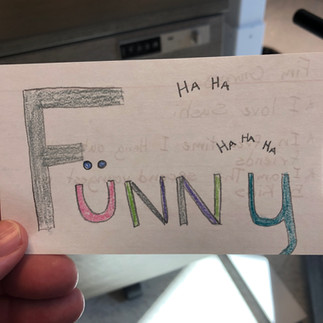



















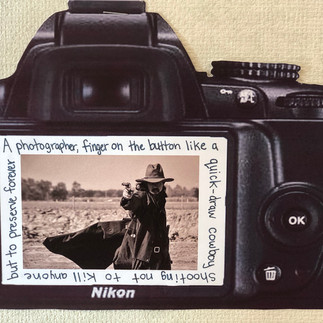





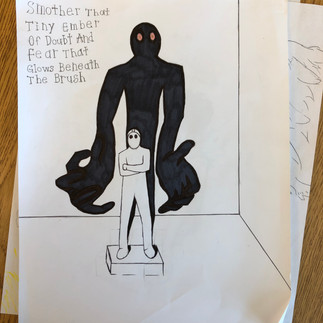






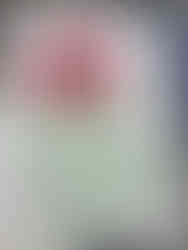




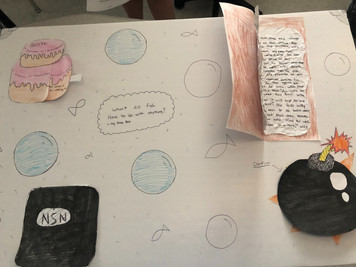





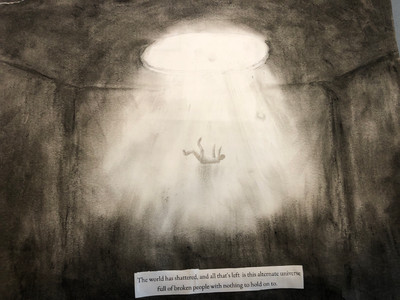

Comments